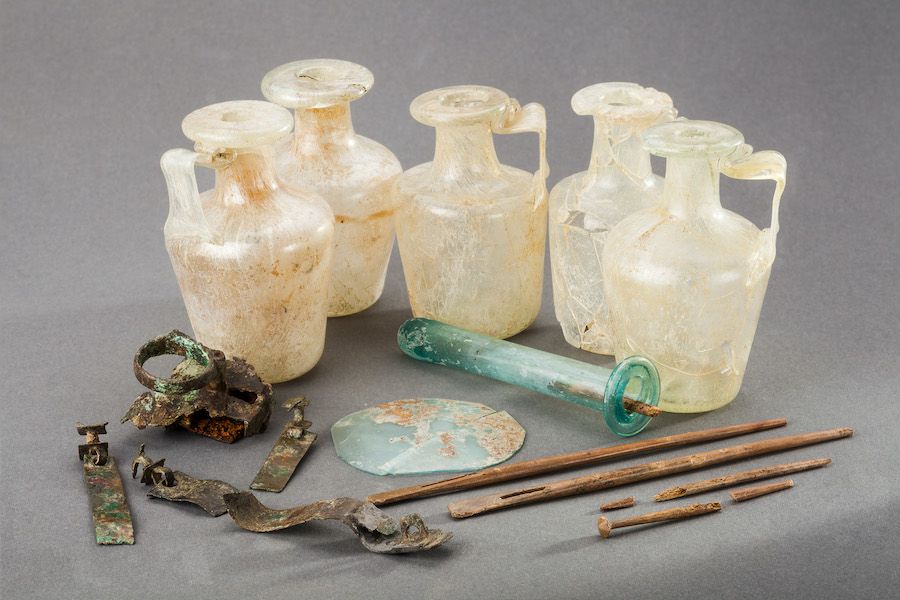From our editors | Photos: municipality of Nijmegen
May 8, 2024
Exhibition of Roman graves from the Nijmegen Burchtstraat shows new insights.
Who was the woman buried for centuries in the lead sarcophagus, excavated in Nijmegen’s Burchtstraat? What was her life like? New research results tell us more and more about the ‘Loden Lady’ and the lives of the inhabitants of Roman Nijmegen. The Municipality of Nijmegen and Valkhof Museum are jointly showing the latest discoveries with the exhibition Rich Roman Tombs from the Nijmegen Burchtstraat.
In May 2001, several graves were uncovered during sewerage work in the Nijmegen Burchtstraat. As far back as Roman times, there was a road there, with people buried on either side. One of the two discovered rich graves belonged to a Roman woman from wealthy circles. She is buried in a lead sarcophagus, a rare phenomenon in this region. The find found a home in the Valkhof Museum, and was soon nicknamed ‘Loden Lady’. She became the most famous resident of Roman Nijmegen.
Archaeologists Joep Hendriks and Katja Zee at the lead sarcophagus.

Thanks to additional financial resources made available and the development of new research techniques, new research could be carried out. Through this extensive archaeological research, we learn new facts about her more than twenty years after the find. And it turns out to be more than we thought.
New insights
The exhibition presents the results of the elaboration of the 2001 excavation and the first results of the additional investigations that have now been carried out. This new research has determined that the tomb of the Lead Lady is about 100 years older than originally thought. The grave dates from around the year 200.

In the new research, the coffin, the skeleton and the objects that were brought with it were also sifted through and analyzed. The lead from the sarcophagus, the remains of textiles and gold, the glass bottles with spatulas, the mirror and the various parts of the skeleton – these are all puzzle pieces for the archaeologists. The story of the Lead Lady is being fleshed out little by little.

The exhibition also shows for the first time a second person who was buried in Roman times on the site of the current busy shopping street. This person, a man, was buried in a tufa ash coffin with precious glass dishes. His grave also dates from around the year 200. Both the coffin and the objects taken from the grave did not emerge unscathed, but thanks to careful restoration and conservation work, a large part can still be displayed here.
Ongoing exhibition
The research continues, and the exhibition will continue to grow in the near future with presentations of new results. For example, research was conducted on the organic material found in the lead coffin. To find out more about the origin of the lead, lead isotope research was carried out, and for more information about the origin and diet of the woman, samples were taken for strontium and oxygen isotope research.
Ultimately, the researchers make a new facial reconstruction based on DNA research. This will be shown in the new Valkhof Museum after the renovation. So it’s worth coming back for the Loden Lady.
Exhibition: Rich Roman graves from Nijmegen Burchtstraat
Organized by: Valkhof Museum in collaboration with the municipality of Nijmegen
Dates: May 17, 2024 to March 30, 2025
Location: Valkhof Museum, pop-up location Keizer Karelplein 33, Nijmegen
Opening hours: Tuesday to Sunday from 11 a.m. to 5 p.m
With thanks to the municipality of Nijmegen, SNMAP, Constructing the Limes and all researchers involved in this project.

Share this message:
Tags: Loden Lady Burchtstraat older expected
-










